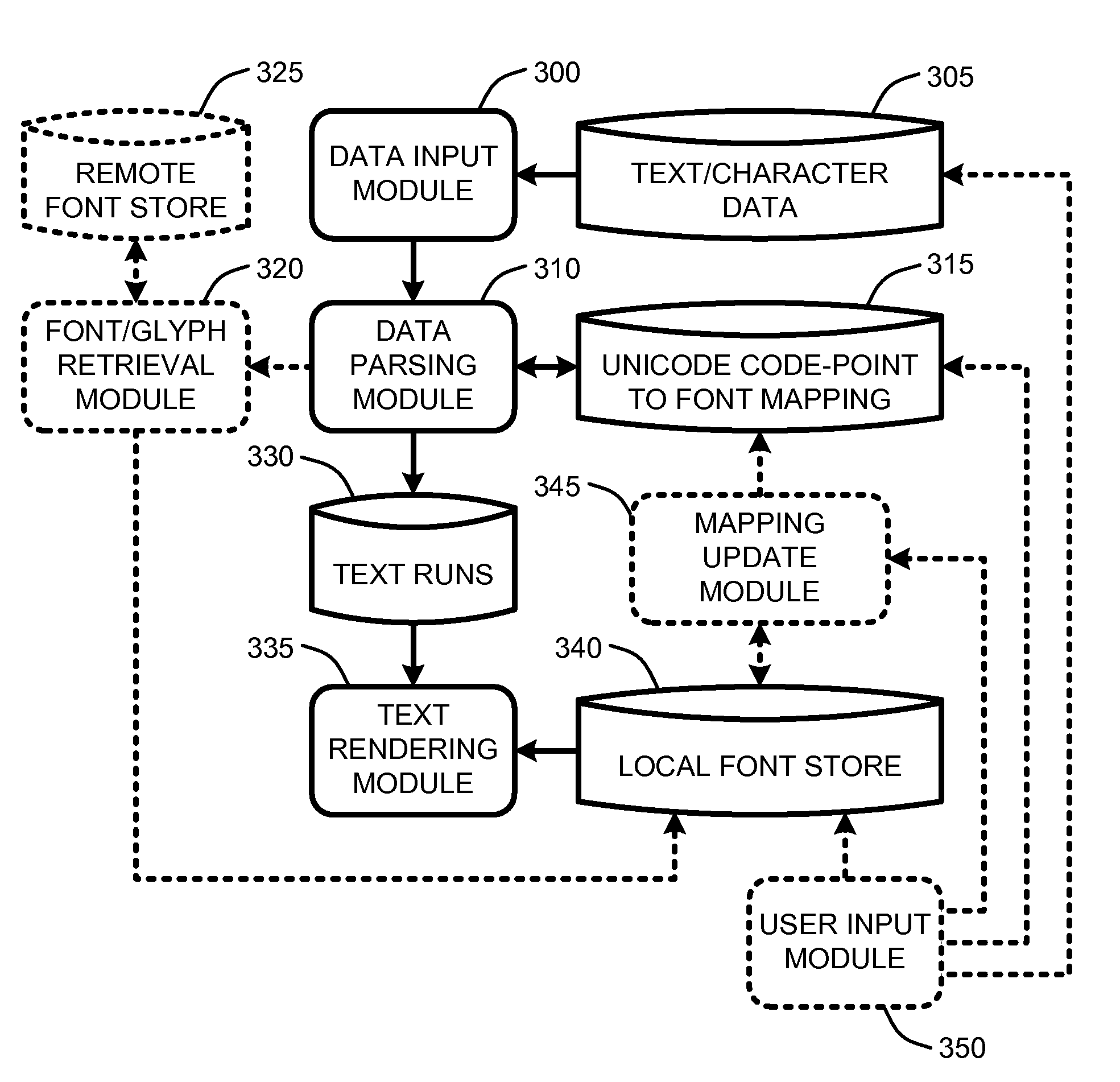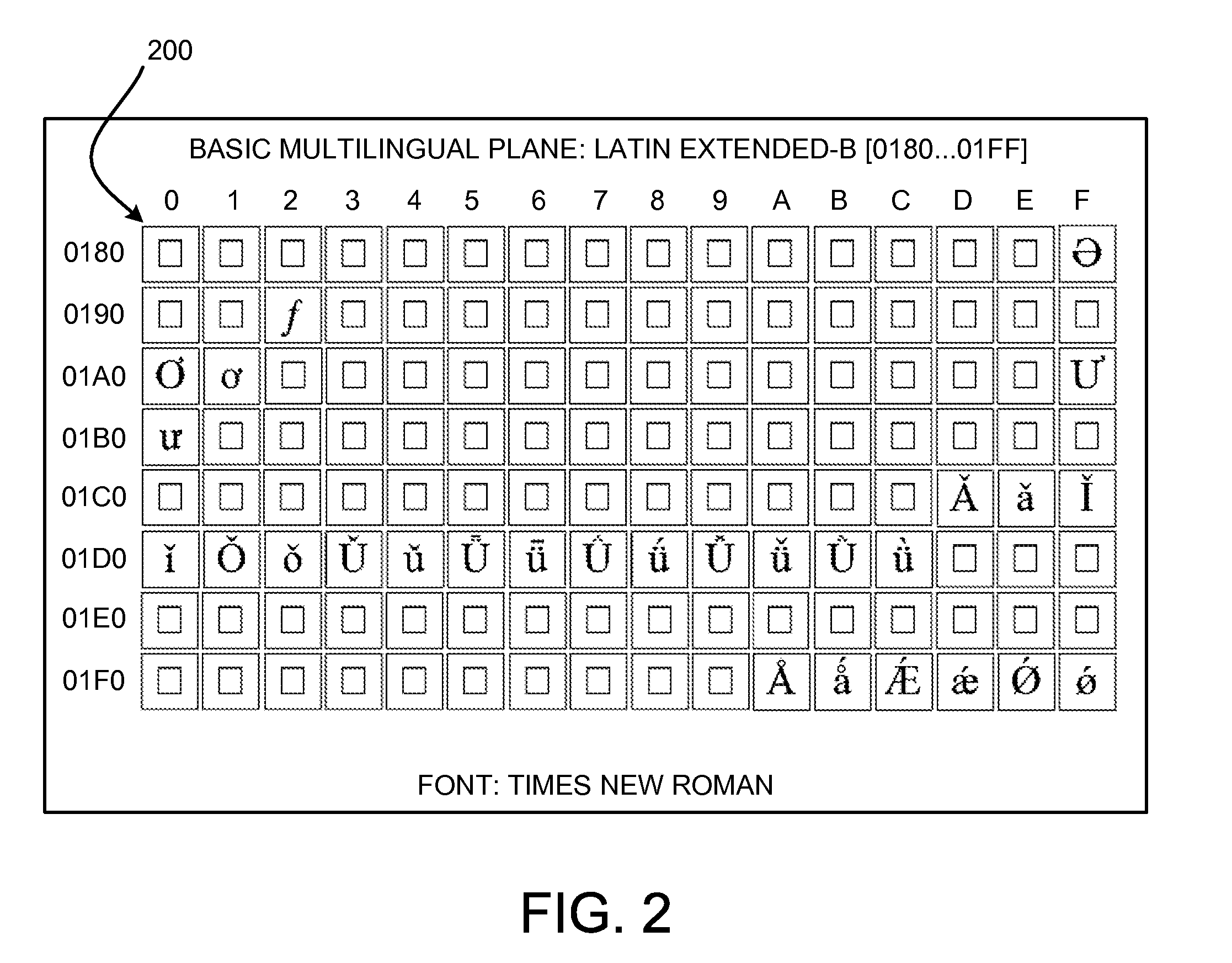Character-level font linking
a font and character-level technology, applied in the field of font mapping, can solve the problems of not being able to define glyph images in the unicode standard, the type of dynamic font linking tends to be computationally expensive, and the problem of “white box” character rendering frequently occurs
- Summary
- Abstract
- Description
- Claims
- Application Information
AI Technical Summary
Benefits of technology
Problems solved by technology
Method used
Image
Examples
Embodiment Construction
[0025]In the following description of various embodiments of the present invention, reference is made to the accompanying drawings, which form a part hereof, and in which is shown by way of illustration specific embodiments in which the invention may be practiced. It is understood that other embodiments may be utilized and structural changes may be made without departing from the scope of the present invention.
[0026]1.0 General Definitions:
[0027]The definitions provided below are intended to be used in understanding the description of the “Character-Level Font Linker” provided herein. Further, as described following these definitions, FIG. 1 illustrates an example of a simplified computing environment on which various embodiments and elements of the Character-Level Font Linker may be implemented The terms defined below generally use their commonly accepted definitions. However, for purposes of clarity, the definitions for these terms are reiterated in the following paragraphs:
[0028]...
PUM
 Login to View More
Login to View More Abstract
Description
Claims
Application Information
 Login to View More
Login to View More - R&D
- Intellectual Property
- Life Sciences
- Materials
- Tech Scout
- Unparalleled Data Quality
- Higher Quality Content
- 60% Fewer Hallucinations
Browse by: Latest US Patents, China's latest patents, Technical Efficacy Thesaurus, Application Domain, Technology Topic, Popular Technical Reports.
© 2025 PatSnap. All rights reserved.Legal|Privacy policy|Modern Slavery Act Transparency Statement|Sitemap|About US| Contact US: help@patsnap.com



